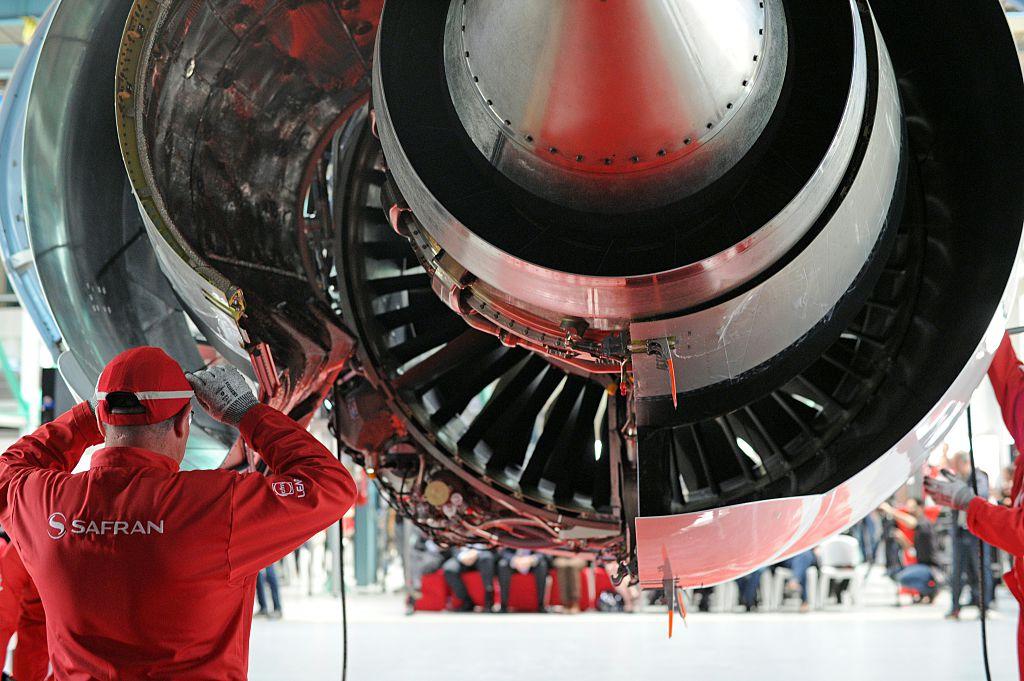
Leap 1 improvements include the addition of a retrofittable reverse bleed system to prevent heat retention in the upper half of the engine and subsequent carbon coking around the fuel nozzles.
CFM International has revealed new details of upgrades it plans to introduce for the Leap 1 in 2024 to improve the engine’s durability and time-on-wing, particularly for operators in the Middle East and Asia where the operating environment presents more challenges.
The upgraded components, along with a revised thrust setting developed specifically for the Leap 1A, are designed to counter nagging maintenance issues across the engine fleet which powers the Airbus A320neo and Boeing 737 MAX families.
Karl Sheldon, executive vice president for the GE Aerospace-Safran joint venture, says “we have no plans to do any major surgery on the architecture of the engine. We're very happy with how it's performing.” However, acknowledging the long-standing durability issues, he adds that “we have received some learnings from the field and feedback from customers, and in the spirit of continuous improvement have decided to undergo some design changes of some specific components.”
One of the key upgrades is a redesigned starter air valve for the Leap 1A, which is housed in a high-vibratory environment on the A320neo fan case. “From a maintenance perspective, it’s probably the one that I hear about the most from customers and it can drive some delays and cancellations,” Sheldon says. CFM has worked with its component provider to redesign the starter air valve housing and the solenoid. “In the last year we have put some of the early units in the field and we're seeing very good success.”
“Thus far we haven't had any failures of the new concept so we'll be looking to roll that out in production to the fleet in 2024,” he adds.
CFM has also redesigned a wear couple housing around the No.3 bearing in both the Leap 1A and B to counter a non-synchronous vibration (NSV) which, in the worst cases, has caused high pressure (HP) compressor stalls. In October the FAA issued a draft airworthiness directive (AD) that proposes requiring operators to monitor NSV levels and replace the No. 3 bearing “spring finger housing” to prevent premature wear. Certain conditions would trigger a requirement to replace stage 2 high-pressure turbine nozzle assembly honeycomb and stator stationary seals.
The directive would give operators of affected Airbus A320neo-family aircraft 125 cycles to calculate NSV data and repeat the process every 125 cycles. If certain CFM-specified thresholds are exceeded, the bearing must be changed. In addition, it would mandate swapping the bearing out before the engine reaches 9,900 cycles.
“We've redesigned that part for a new wear couple that we've put through considerable testing and found it to be a highly effective fix,” Sheldon says. “We have been able to abate a lot of the concerns from customers and field events due to the data and analytics that come off the engine,” he adds, referring to the engine’s sophisticated diagnostic and health-monitoring suite.
Other fixes to be introduced in 2024 include an anti-coking reverse bleed system (RBS) first disclosed by CFM in June, and a redesigned HP turbine blade and nozzle designed to better withstand dusty and polluted environments where Leap 1s with the current turbine configuration have experienced premature removals.
The RBS “will essentially pull under-cowl air when the engine is shut down to keep the fuel nozzles cool, right where the heat soaks up to the upper hemisphere of the engine to prevent the coking,” Sheldon explains. The coking problem occurs when residual heat in the engine core hardware "soaks back" after shutdown. The heat causes unburned fuel around the nozzles which inject fuel into the combustor to evaporate. This leads to hard deposits of solid carbon being gradually laid down in some parts of the engine, eventually shortening time-on-wing between overhauls and in some extreme cases causing in-flight shutdowns.
“The reverse bleed system is a series of pipes and a blower that are fitted to the engine. So this will be retrofittable and will be something that can be done on wing or near wing or certainly in a shop if needed,” Sheldon says.
Tests of the revised HP turbine blade and shroud also continue in the run-up to fielding next year. “We've got an engine that's running right now that is essentially ingesting dust and sand over some pretty severe cycles,” he says. The engine has amassed 3700 cycles to-date. “We'll continue running that engine throughout the year to really prove to ourselves that the durability improvements that we put in the blades will in fact manifest themselves as a true improvement in the field. The blades and nozzles look very good and are a definite improvement over the current state.”
CFM also reveals that it has been working quietly with Airbus on a new, lower thrust rating for climb power on the Leap 1A. Described as an "optimized climb thrust" setting, the initiative “essentially manages the climb thrust ratings of the engine in order to help minimize the temperature experienced by the core,” Sheldon says. “This has a dramatic effect on the durability of the core. Even small changes in temperature can have a very nonlinear effect on the life,” he adds. The revised thrust rating will also be introduced in 2024.
